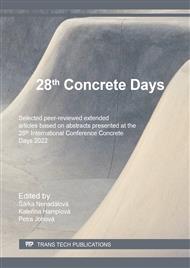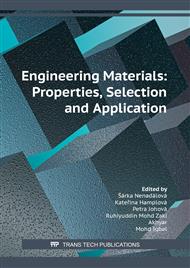p.157
p.163
p.169
p.179
p.187
p.197
p.205
p.211
p.217
Recycled Materials and their Use in Road - Concrete Recycling as an Aspect of Sustainability
Abstract:
The need of returning millions of tons of previously used materials to the production process is already a globally addressed fact. This also applies to building construction, where the construction materials can also be used repeatedly. The use of recycled materials is a crucial tool for sustainable development and reaching a compromise between economic progress and the preservation of the environment. Notable improvement has been recorded in the use of recycled material on road communication. There, the optimal solution is to use the „old surface“ to create a new one – this is advantageous for roads with concrete surfaces, as well as for the ones with bituminous surfaces. Though the effort is to use 100% of the recycled material, there are many cases where it is only possible to use a certain portion of the materials, depending on the type of processing. The remaining volume of milled material is either used to strengthen the subsoil of roads or for service roads. Recycled concrete is suitable as a low-cost alternative of gravel on less stressed structures and places, or as a replacement for quarry stone. The processes of using recycled concrete are actively being studied and improved on in laboratories. However, the portion of recycled concrete affects the consistency of the concrete mix and in order to maintain the required consistency, it is necessary to increase the dosage of mixed-in water, which results in reduced concrete strength. The use of recycled concrete must be assessed for each case according to the grading curve and with the impact on the values of load-bearing capacity, water absorption and frost susceptibility. The economic assessment must also be addressed, with an emphasis on traffic requirements and impact on the environment. The first important step is to offer the investor, architect or supplier a decision-making model which allows one to evaluate the usability of the recycled material, including the consideration of possible risks.
Info:
Periodical:
Pages:
197-202
Citation:
Online since:
August 2022
Authors:
Keywords:
Price:
Сopyright:
© 2022 Trans Tech Publications Ltd. All Rights Reserved
Share:
Citation:



